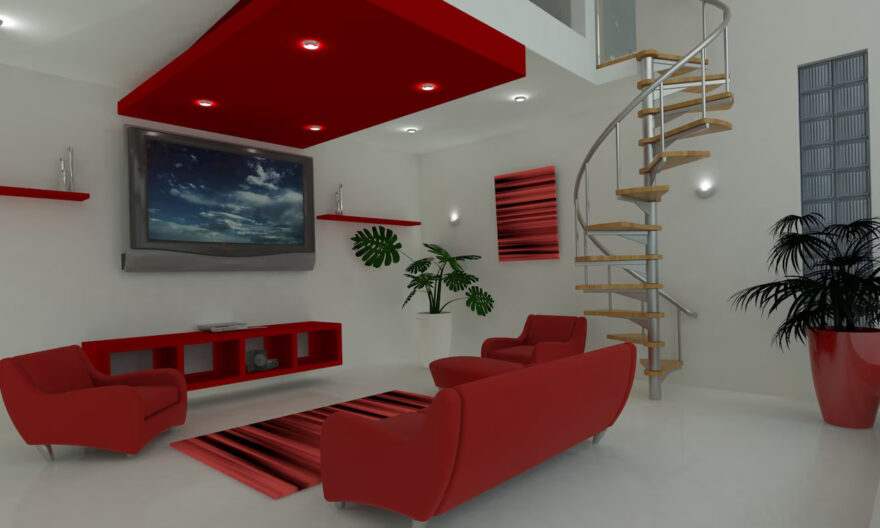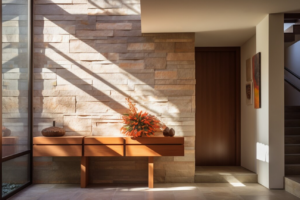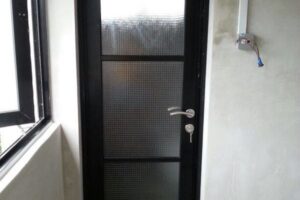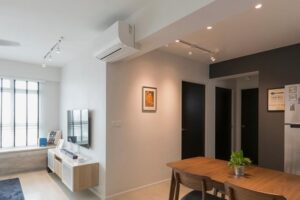
Every homeowner dreams of a home that stands the test of time. When planning an HDB renovation design, material choice becomes more than a style decision—it affects the longevity, comfort, and practicality of the space. Singapore’s climate, daily routines, and layout limitations require careful attention when selecting what goes into your home.
This guide explores the best materials for a long-lasting, low-maintenance, and stylish interior. From kitchen surfaces to flooring and cabinetry, each choice plays a role in shaping how well your home ages. Whether you’re doing a light refresh or a full transformation, the right materials support a smart and sustainable renovation.
Why Material Selection Matters in HDB Homes?
HDB flats have defined layouts and compact spaces. High humidity, foot traffic, and frequent cleaning make some materials wear faster than others. When chosen well, durable materials reduce repair needs, resist mould, and maintain appearance with minimal upkeep.
In small homes, surfaces serve more than one role. A kitchen counter doubles as a dining space. A living room becomes a study and play area. Each material must carry multiple functions without showing early wear.
Flooring Options That Endure Time and Traffic
Floors take the most punishment in any home. They face daily traffic, spills, and cleaning tools. Good flooring balances strength with appearance.
1. Vinyl Flooring
- Vinyl suits many modern homes due to its strength and variety of styles. It mimics wood or stone without their upkeep demands. This material resists scratches, stains, and water, making it ideal for kitchens, bedrooms, and living areas.
2. Porcelain Tiles
- For homeowners who want hard-wearing surfaces, porcelain delivers. These tiles handle moisture well and resist chips better than basic ceramics. Their smooth finish helps with quick cleaning, though they may feel cold underfoot without rugs.
3. Engineered Wood
- While not as water-resistant as vinyl or tile, engineered wood combines beauty with structure. The layered core strengthens the plank while the top layer gives a natural wood look. Proper sealing prevents water damage.
Kitchen Surfaces Built for Utility
The kitchen works hard. Surfaces must survive heat, knives, moisture, and stains. Choosing the right countertop and cabinet finish keeps your kitchen looking fresh longer.
1. Compact Laminate for Cabinets
- Compact laminate uses layered resin to build strength and water resistance. Unlike thin laminates, this type resists impact and stays flat. Its smooth surface cleans with just a damp cloth, making it suitable for daily use.
2. Quartz for Countertops
- Quartz combines crushed stone and resin into a non-porous slab. It resists cuts, stains, and bacteria better than natural stone. Though it may need support due to its weight, quartz remains one of the most durable options for cooking areas.
Bathroom Finishes That Withstand Moisture
Humidity and soap leave their mark over time. Durable bathroom materials prevent mould, slippery floors, and water damage.
1. Anti-Slip Tiles
- In wet zones, tiles must prevent falls. Anti-slip tiles use texture to increase grip. They often come in matte or stone-like finishes. Choose tiles with water absorption rates below 0.5% to prevent long-term damage.
2. Solid Surface Vanity Tops
- For washbasins, solid surfaces offer smoothness without pores. They repel water and clean easily. Compared to stone, they weigh less and avoid cracking when installed correctly.
Walls and Storage That Handle Daily Life
Walls and cabinets need to endure frequent contact, whether from children’s fingerprints or accidental bumps. The material choice here supports visual appeal and practicality.
1. High-Pressure Laminates (HPL)
- HPLs coat surfaces with thick resin-treated sheets. They shield cabinets and wardrobes from wear. Their finishes resist scratches, sunlight, and chemicals. With many textures available, they also match various styles.
2. Washable Paints
- Painted walls often collect dust, dirt, or scuffs. Washable paints allow light scrubbing without fading. These suit bedrooms and living rooms where walls see more contact.
Ceiling and Lighting Considerations
Ceilings usually stay out of reach, but they affect acoustics and brightness. The right ceiling materials can hide pipes and wires while improving comfort.
1. Plasterboard False Ceilings
- False ceilings built from plasterboard help conceal lighting and aircon ducts. They resist fire better than wood and allow for clean lines. Though heavier, their firm surface provides room for down lights and soundproofing.
2. Aluminium Ceiling Panels
- In bathrooms, aluminium panels resist steam and stay rust-free. Their smooth surface reflects light well, brightening tight spaces. These panels work best in damp zones with high ceilings.
Hardware and Fittings That Hold Up
A good renovation interior design considers not just surfaces, but also the parts you touch daily—hinges, handles, and fasteners.
1. Stainless Steel Fittings
- Handles, drawer runners, and shelf brackets benefit from stainless steel. It resists rust and keeps its shape. In kitchens and bathrooms, where contact with moisture often happens, stainless steel holds firm.
2. Soft-Close Hinges
- Cabinet doors and drawers benefit from soft-close systems. These reduce stress on the structure by slowing down the closure. Fewer sudden slams help your fittings last longer.
Comparing Material Performance
A helpful way to select materials is by seeing how they perform in key areas. The table below offers a side-by-side view.
Material Comparison for Common Home Areas
| Area | Material | Water Resistance | Scratch Resistance | Ease of Cleaning | Durability |
| Living Room | Vinyl Flooring | High | High | Easy | Strong |
| Kitchen Top | Quartz | High | High | Easy | Very High |
| Cabinets | Compact Laminate | High | Moderate | Easy | Strong |
| Bathroom | Anti-Slip Tile | Very High | High | Moderate | Very High |
| Walls | Washable Paint | Moderate | Moderate | Easy | Good |
This breakdown shows that the best choices depend on location and use. A kitchen may need tougher surfaces, while a bedroom prioritises comfort.
Choosing Materials Based on Lifestyle
Different homes need different features. A family with children may need more scratch-resistant and washable finishes. Pet owners may look for stain-resistant and slip-proof floors. Couples or retirees might focus more on ease of cleaning and comfort.
1. For Busy Families
- Surfaces that clean easily and hide smudges work best. Use laminates, quartz tops, and washable paint. Vinyl flooring helps prevent accidents and cleans fast.
2. For Working Professionals
- Low-maintenance materials suit people who travel or work long hours. Choose solid surfaces, tiles, and materials that don’t warp or stain from light neglect.
3. For Elderly Residents
- Safety and ease matter most. Anti-slip flooring, rounded corners, and sturdy handrails help reduce risk. Use lightweight cabinet doors and lever handles.
Sustainability and Environmental Factors
Beyond function and form, some materials also support healthier indoor air and lower impact on the planet. Singapore’s push for green living includes renovation practices.
1. Low-VOC Materials
- Paints, adhesives, and some surfaces release volatile organic compounds (VOCs). These may cause irritation or discomfort. Choose certified low-VOC options when possible.
2. Recyclable and Natural Finishes
- Materials like aluminium, engineered wood, or bamboo offer strength with lower carbon footprints. These choices support eco-friendly renovations without compromising style or strength.
Final Thoughts
Planning a long-lasting HDB renovation design means looking beyond appearances. Material decisions shape how well your space serves you. From durable floors to water-resistant cabinets, smart choices reduce wear and protect your investment.
Think about how you live, who shares the space, and how often each surface sees action. Match your lifestyle to your materials. When the right surfaces come together, your renovation doesn’t just look good—it lasts.
Whether your goal involves a fresh start or a gentle upgrade, every touchpoint—from handles to wall paint—adds to your home’s character and endurance. Make each choice count in your renovation interior design, and your home will repay you with years of function and comfort.




